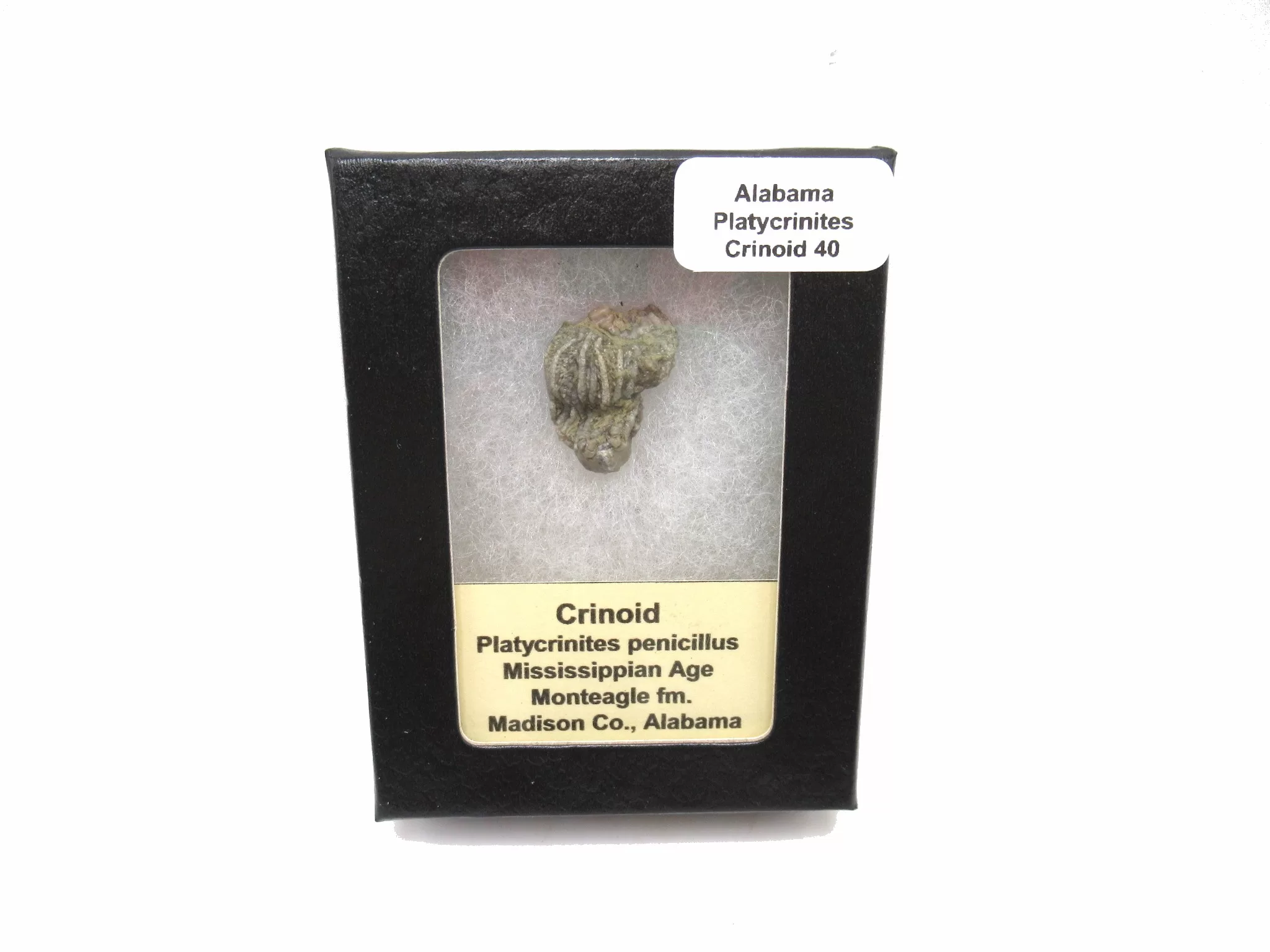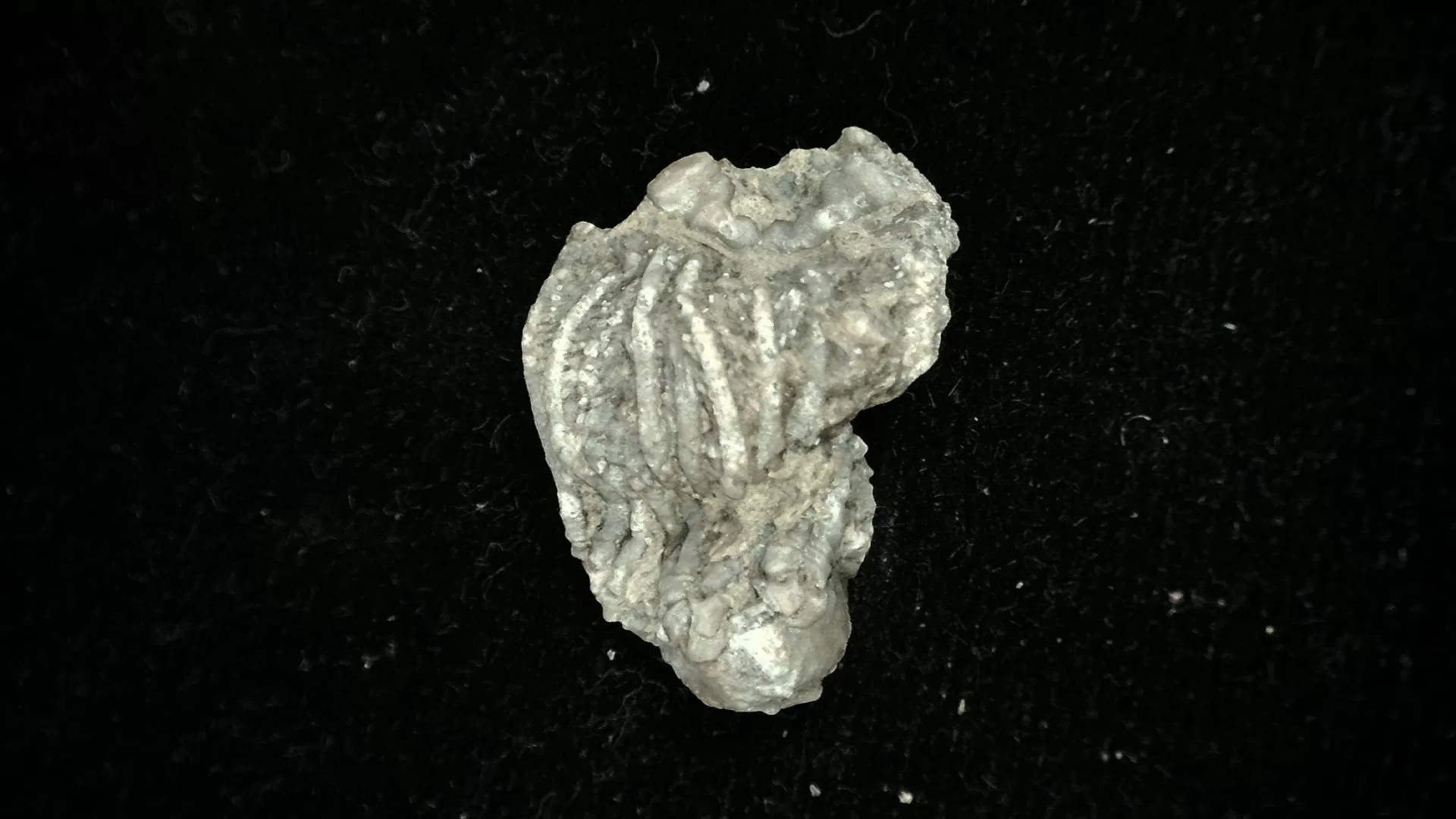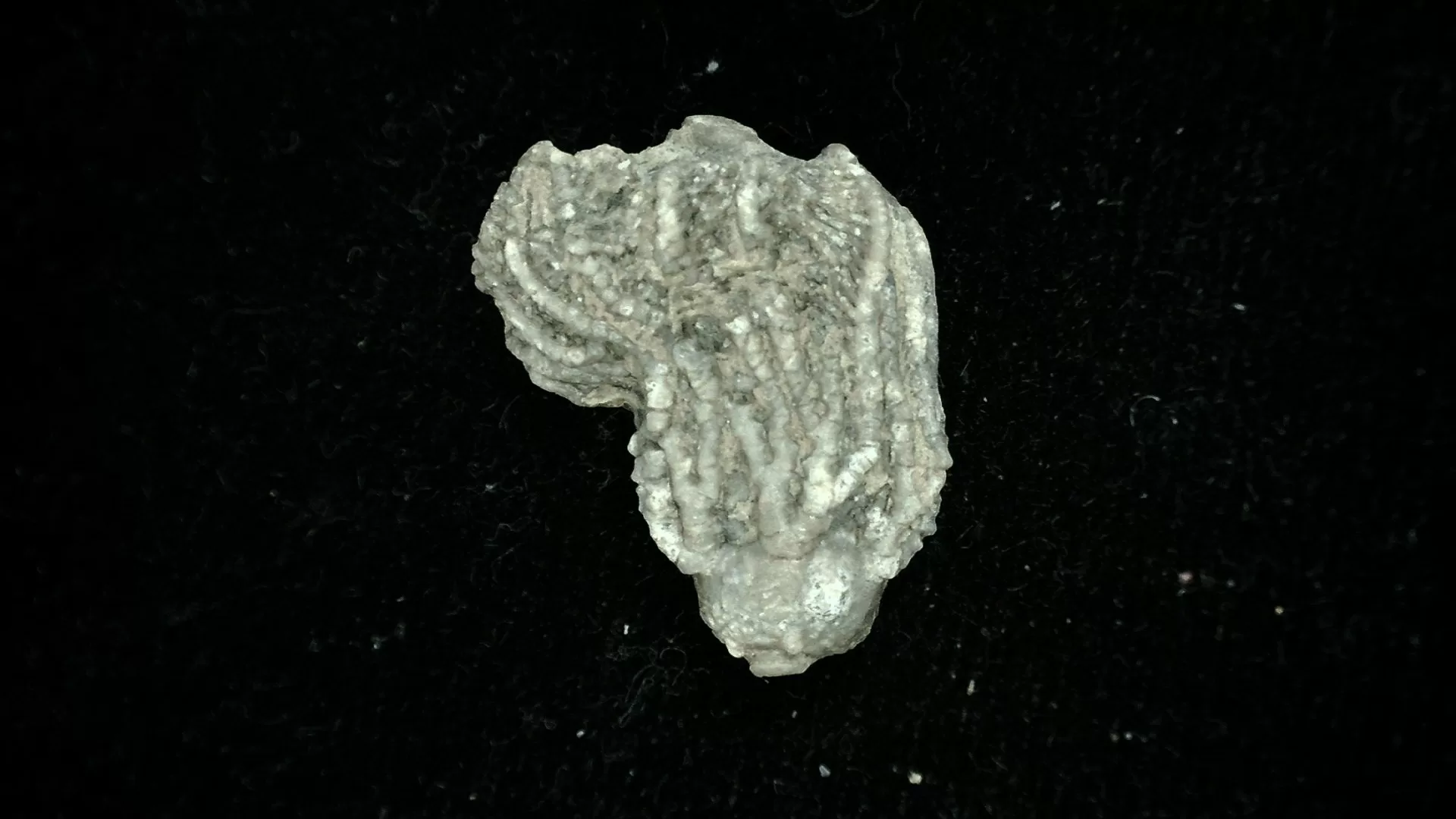Description
Alabama Platycrinites
- Platycrinites penicillus
- Mississippian Age
- Monteagle Formation
- Madison County, Alabama
- This .89″ long highly detailed specimen will come in the 2.25″ x 3.25″ Riker Mount with Label as shown
- MORE Crinoid Fossils for Sale
Alabama Platycrinites are an extinct genus of Paleozoic stalked crinoids belonging to the family Platycrinitidae.
These stationary upper-level epifaunal suspension feeders lived during the Devonian, Permian and the Carboniferous periods, from 376.1 to 259.0 Million years ago.
WHAT ARE CRINOIDS?
Crinoids are marine animals that make up the class Crinoidea of the echinoderms (phylum Echinodermata). Crinoidea comes from the Greek word krinon, “a lily”, and eidos, “form”. They live both in shallow water and in depths as great as 6,000 metres (20,000 ft). Sea lilies refer to the crinoids which, in their adult form, are attached to the sea bottom by a stalk. Feather stars or comatulids refer to the unstalked forms.
Crinoids are characterized by a mouth on the top surface that is surrounded by feeding arms. They have a U-shaped gut, and their anus is located next to the mouth. Although the basic echinoderm pattern of fivefold symmetry can be recognized, most crinoids have many more than five arms. Crinoids usually have a stem used to attach themselves to a substrate, but many live attached only as juveniles and become free-swimming as adults. T
The basic body form of a crinoid is a stem (not present in adult feather stars) and a crown consisting of a cup-like central body known as the theca, and a set of five rays or arms, usually branched and feathery. The mouth and anus are both located on the upper side of the theca, making the dorsal (upper) surface the oral surface, unlike in the other echinoderm groups such as the sea urchins, starfish and brittle stars where the mouth is on the underside.








